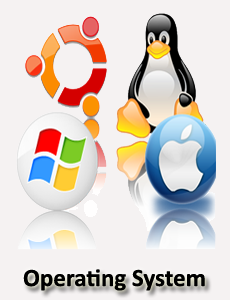CPU Scheduling
What is CPU Scheduling
CPU Scheduling is a process of determining which process will own CPU for execution while another process is on hold. The main task of CPU scheduling is to make sure that whenever the CPU remains idle, the OS at least select one of the processes available in the ready queue for execution. The selection process will be carried out by the CPU scheduler. It selects one of the processes in memory that are ready for execution.
The Purpose of a Scheduling Algorithm
- Maximum CPU utilization
- Fare allocation of CPU
- Maximum throughput
- Minimum turnaround time
- Minimum waiting time
- Minimum response time
Important CPU scheduling Terminologies
- Burst Time/Execution Time: It is a time required by the process to complete execution. It is also called running time.
- Arrival Time: when a process enters in a ready state
- Finish Time: when process complete and exit from a system
- Multiprogramming: A number of programs which can be present in memory at the same time.
- Jobs: It is a type of program without any kind of user interaction.
- User: It is a kind of program having user interaction.
- Process: It is the reference that is used for both job and user.
- CPU/IO burst cycle: Characterizes process execution, which alternates between CPU and I/O activity. CPU times are usually shorter than the time of I/O.
Types of CPU Scheduling
There are two kinds of CPU Scheudling which are given below.
- Preemptive Scheduling
- Non-Preemptive Scheduling
Preemptive Scheduling
In this type of Scheduling, the tasks are usually assigned with priorities. At times it is necessary to run a certain task that has a higher priority before another task although it is running. Therefore, the running task is interrupted for some time and resumed later when the priority task has finished its execution.
Thus this type of scheduling is used mainly when a process switches either from running state to ready state or from waiting state to ready state. The resources (that is CPU cycles) are mainly allocated to the process for a limited amount of time and then are taken away, and after that, the process is again placed back in the ready queue in the case if that process still has a CPU burst time remaining. That process stays in the ready queue until it gets the next chance to execute.
Non-Preemptive Scheduling
Under non-preemptive scheduling, once the CPU has been allocated to a process, the process keeps the CPU until it releases the CPU either by terminating or by switching to the waiting state. This scheduling method is used by the Microsoft Windows 3.1 and by the Apple Macintosh operating systems.
It is the only method that can be used on certain hardware platforms because It does not require the special hardware(for example a timer) needed for preemptive scheduling.
In non-preemptive scheduling, it does not interrupt a process running CPU in the middle of the execution. Instead, it waits till the process completes its CPU burst time, and then after that it can allocate the CPU to any other process.
Some Algorithms based on non-preemptive scheduling are: Shortest Job First (SJF basically non-preemptive) Scheduling and Priority (non- preemptive version) Scheduling, etc.
CPU scheduling decisions may take place under the following four circumstances
- 1. When a process switches from the running state to the waiting state(for I/O request or invocation of wait for the termination of one of the child processes).
- 2. When a process switches from the running state to the ready state (for example, when an interrupt occurs).
- 3. When a process switches from the waiting state to the ready state(for example, completion of I/O).
- 4. When a process terminates.
In circumstances 1 and 4, there is no choice in terms of scheduling. A new process(if one exists in the ready queue) must be selected for execution. There is a choice, however in circumstances 2 and 3.
When Scheduling takes place only under circumstances 1 and 4, we say the scheduling scheme is non-preemptive; otherwise, the scheduling scheme is preemptive.
Why do we need Scheduling?
In Multiprogramming, if the long term scheduler picks more I/O bound processes then most of the time, the CPU remains idol. The task of Operating system is to optimize the utilization of resources. If most of the running processes change their state from running to waiting then there may always be a possibility of deadlock in the system. Hence to reduce this overhead, the OS needs to schedule the jobs to get the optimal utilization of CPU and to avoid the possibility to deadlock.
CPU Scheduling Criteria
A CPU scheduling algorithm tries to maximize and minimize the following
Maximize:
CPU utilization: CPU utilization is the main task in which the operating system needs to make sure that CPU remains as busy as possible. It can range from 0 to 100 percent. However, for the RTOS, it can be range from 40 percent for low-level and 90 percent for the high-level system.
Throughput: The number of processes that finish their execution per unit time is known Throughput. So, when the CPU is busy executing the process, at that time, work is being done, and the work completed per unit time is called Throughput.
Minimize
Waiting time: Waiting time is an amount that specific process needs to wait in the ready queue.
Response time: It is an amount to time in which the request was submitted until the first response is produced.
Turnaround Time: Turnaround time is an amount of time to execute a specific process. It is the calculation of the total time spent waiting to get into the memory, waiting in the queue and, executing on the CPU. The period between the time of process submission to the completion time is the turnaround time.

